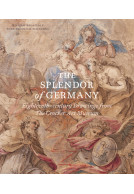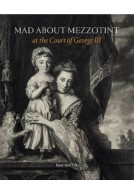Flight and the Artistic Imagination (Paperback)
(click here for international delivery rates)
Order within the next 9 hours, 13 minutes to get your order processed the next working day!
Need a currency converter? Check XE.com for live rates
Accompanying a major exhibition at Compton Verney, Warwickshire, this book examines the innate human desire to transcend the limitations of physiology and gravity – and to fly. Through an intriguing combination of paintings, sculpture, photographs, drawings, prints and video, including works by Leonardo da Vinci, José Francisco de Goya y Lucientes, Paul Nash, Peter Lanyon and Hiraki Sawa, the reader will be provided with a unique overview of artists' creative responses to flight, from the earliest imaginings to an era in which space travel has allowed us to glimpse other worlds.
For centuries before the modern era people imagined how to go beyond the boundaries imposed by physiology and gravity and take to the air. Myths in every culture have described the overcoming of these physical restrictions as supernatural events because the upper air was the realm of the gods. For the same reason, humans who attempted to trespass on that domain were cast down; only those chosen by the divine will would stay aloft. Flying was thus associated with the sublime because it transcended the limitations of earthly existence.
In the modern era, however, flying has become an everyday occurrence and the sense of mystery has been largely forgotten. But once humans finally got airborne, and before flying became a routine phenomenon of mass transit, there was a time when the development of aviation and the experience of flight had a significant impact on artistic practice. Arguably, the same tropes of triumph and disaster that animated the ancient myths of human flight inform the creative responses to the conquest of the air, celebrating pioneers from Bleriot to Gargarin whose exploits conquered gravity and similarly mourning those who dared but died in the attempt.
Beyond the artistic response to aviation history lies the artist's use of flight as a creative resource. Probably the most profound aspect of this was the recalibration of space in painting, with the ground plane, the horizon and perspective itself all thrown into doubt when representing the aerial world. Likewise, the familiar terrains that had been the stock in trade of landscape for hundreds of years were reconstituted to offer entirely new vistas when seen from above.














